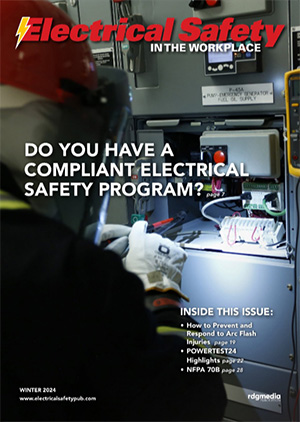Updated UL943-5th Edition and UL1640 Code effects on In-Line GFCI Cordsets
May 5, 2021, UL, as part of its 943-5th Edition requirement for self-testing GFCI, required all GFCI protected devices include a Self-Testing feature, initially required for GFCI receptacles in 2015. This requirement now extends to any portable distribution unit (“spider” boxes), other portable power units incorporating GFCI protection. Additionally, the UL1640 requirement was updated as well, requiring open neutral protection. Both requirements extend to popular in-line GFCI Cordsets.
In-Line GFCI cord protection has been a popular solution to corded temporary power applications for decades and are required by NEC 590, NFPA 70E as well as OSHA 1926. All these requirements are intended to protect workers using corded electrical products in the field. They provide not only GFCI protection but important UL 1640, open neutral protection as well.
UL1640 – Open Neutral Protection explained – Although the title of the requirement says it all, there are important safety features included in this requirement. GFCI receptacles are mechanically latched devices. Meaning, once closed they will open only when there is a GFCI situation, or the user presses the test button. Jobsites, by their nature use portable power, typically delivered by portable extension cords. The likelihood of a cord becoming damaged in these worksite environments is very high, not to mention if the neutral conductor is cut or damaged. In this situation, the wall mounted GFCI receptacle relay contacts would not open, exposing a worker to a disabled GFCI and potential for serious shock injury. This situation is even more dangerous when working in a confined space, where rescue is more challenging. Open Neutral Protection is just that – when the neutral conductor is severed or removed from the circuit, an internal relay opens and fails to delivery power to protect work from potential shock.
Auto Reset and Manual Reset Explained – In-Line GFCI cordsets are available with two important features – Auto Reset and Manual Reset. In in the event of a power loss versions will cease to deliver power. When power is restored, Auto-Reset units return power to the cord automatically. This is important when used for lighting, battery chargers, communication units or other products important to remain powered.
Manual-Reset units require the user to return to the cordset GFCI and reset the unit to again deliver power. This is especially important when working around rotating equipment where an auto-powered on situation might cause serious harm – think power saws or cutting tools, or when the user wants to investigate why power was lost in first placed.
Durability and protection from environmental moisture or dust is an important feature of these devices to ensure consistent GFCI and Open Neutral protection over their lifetime. Look for GFCI enclosures with NEMA 4 protected test and reset buttons and a case that has NEMA 6P protection, (submersion in 6’ of water for 24-hours). Although you might not intentionally submerse an electrical product, jobsites are exposed to weather where a storm event might cause the device to be submersed in water for a period of time. This robust enclosure protection also ensures that dust or other contaminates do not penetrate the test and reset buttons or cord entry points, causing the internal GFCI to fail.
Learn more about Ericson’s extensive offering of in-line GFCI.
For over 104 years, at Ericson, Safety is our Standard.
Share on Socials!
One Electrician’s Life Lesson: The Case for Electrical Safety Training for both Electricians and Non-Electricians
NFPA, ESFI underscore safety at home and in the workplace during National Electrical Safety Month
ESW Spring Issue Publisher’s Note
Leaders in Electrical Safety
• Aramark
• Bowtie Engineering
• Enespro
• Ericson
• I-Gard Corporation
• IRISS
• KERMEL, INC.
• Lakeland Industries
• MELTRIC Corporation
• National Safety Apparel
• National Technology Transfer
• Oberon
• Saf-T-Gard
• SEAM Group
Subscribe!
Sign up to receive our industry publications for FREE!







